#seabreeze2022
Explore tagged Tumblr posts
Text
Danube River cruise, Part 2. Zurich day 2.

After a nap we walked back into the old part of Zurich for dinner. Crossing the many bridges gives you a unobstructed view of the buildings. The swans were still feeding after dark.

Cheese fondue with morel mushrooms is phenomenal. Items to dip in the cheese are chunks of bread, small potatoes, pickled onions and best of all pickles. Second coarse was a rosti (hash brown) and sliced lamb with a mushroom sauce.


Just wandering around the city which is very safe.

Interesting 15 th century Tavern.

Not many wooden buildings.

This fountain is near the Cathedral, hence its motif.

A back ally bar.

Carriage at the museum.

Nancy with Heidi the cow.

Similar to Amsterdams 3 dimensional plaster figures on the building. This is a painting indicating to people who could not read what is sold here. This was a cobblers business back in the day.

Another example of a business advertisement is the double painting on the corner of an old printing shop. The words on the left say, “Book Printer.”

Nancy getting a sip from the “snail fountain” on Frog street. Someone had lined the top of the fountain with snail shells.

This is “Frog Street” several shops sold frog souvenirs.

Here a very wide fountain was made more user friendly by the first spout pouring into a funnel. Which has supported extension spout pouring the water out closer to the edge of the fountain.

The tops of the chimneys had small designs looking like little houses.

The Swiss knock off of Kentucky Fried Chicken.

We took the funicular car to the top which is where the University is.

View from the University level.

One of the University buildings.




Another example of colorful shudders.

Large water fountain with the Blue and White flag of the city of Zurich.


This was an observatory in town. The wind vane had the sun and moon symbols.

Classic Swiss lunch of Mac n’Cheese but you spoon in dollops of applesauce which sweetens it up. Again this is not Velvetta cheese.

Waiting at the train station looking for the gate number.

First class car for our trip of eleven hours to Wein (Vienna). Only a few people on the trip. We were looking forward to a beautiful ride through the farmlands of Switzerland. Unfortunately the windows were pretty dirty preventing photos. Worst of all the chairs did not recline at all. Making the trip horrible. It was a very fast train averaging 90 mph. Coming down hill from Innsbruck we were doing 136 mph. Barely felt the train moving. We arrived in Wein at 0140 in the morning. They closed down the train station and kicked us and the homeless out in the cold. Hotels were full. Drunks were screaming. Cold biting wind was blowing. Lucky for us we found a 24 hour bar and moved in for 4 hours.
4 notes
·
View notes
Text
Danube River Cruise, Part 7.
Durnstein and Melk Abby.

Another foggy start to the day. Three swans swim up to our window, to welcome us. Being on the very bottom deck of the boat we were eye ball to eye ball with them. They work along the edge of the boat eating the algae.

We climb to the Durnstein Castle with the help of a local guide. King Richard the LionHeart was held for ransom here in 1192 while returning from the Crusades.

View from the donkey trail to the castle. Durstein is a very, very small village. I believe only 40 local people live here year round. Most shops are owned by outsiders.

Walking into town.

A city gate into the city.

This was a self serve Riesling wine spot on the trail through town. Just put the cash in the tin on top and grab a local wine.

Apricot orchard.



The doors in town had very ornate handles.



We returned to the ship for lunch and a day cruise to Melk. Above you can see Durnstein in our wake.

Countryside is beautiful but it is cold outside.

Warm red wine and breaking out the blankets on deck.

Sharing blankets on deck as we sightsee on the Danube.
Left to right: Christina (England), John and Sarah (retired American pilot and Pediatrician), Nancy and a fellow American passenger.

Beautiful little towns and villages on the banks of the Danube.

More deserts served top side.

Ho hum…Another castle overlooking a small village.

This is one of two car ferries we saw. It is the black thing to the right of the photo. It does not have an engine, but it is attached by a cable tether to a main cable stretching across the river. I believe they just turn the rudder and the current moves them across the river to the other side, as their tether slides along the cable.

Beautiful wine country.

Very small castle perched on the very tip top of a rock.


About to pass another ship going the opposite direction. Passing port-to-port is standard procedure. Due to the curves in the river we are now passing starboard-to-starboard. Besides talking to the other ship and coordinating which side to pass. The Captain has deployed the blue panel with a light in the center, signaling a starboard-to-starboard pass. Once the pass is complete he will stow it horizontally out of sight.

With a quick stop in Melk, Austria we jump on a bus to tour the famous Benedictine Melk Abby founded in 1089.
It is now a coed school with approximately 900 students. We took a walking tour, but are not allowed to take photos in many of the rooms.

So here is an internet photo. Eight pounds of gold were used throughout the abby. The actual cathedral was beautiful as you would imagine.

The library has over 100,000 manuscripts and is a national Treasure. Researchers from around the world come here to read the original manuscripts. The illusionists artist can make a flat ceiling look rounded as above.
Ever walk from one side of a room to the other in front of a huge portrait painted by the Masters. The eyes will follow you and stare directly at you, no matter where you stand in the room. It is called, “The Mona Lisa effect.” It is simply how our brain interprets a two dimensional painted portrait to look three dimensional. The eyes are actually painted looking strait ahead. We just interpret it as looking our way.

This is the ceiling of the “Marble Room.” One of the most interesting rooms, it was the size of a basketball court. The queen would sit dead center in the room and read from the light of a window directly in front of her. When she looked at the painted ceiling above her. It would appear to her that the twenty or so painted gothic columns were reaching up to heaven and the gods. The columns are all angled differently to appear pure vertical when looked at from her chair alone. Here the ceiling is curved but painted to look flat.
While we were at the Abby our ship had continued to Linz, Austria. So our bus drove us to the ship, arriving after dark.
Tomorrow we will tour Linz.
3 notes
·
View notes
Text
Danube River Cruise, Part 4
Still in Budapest

Still doing walk about. So much to see and do in Budapest. This is their “Funnel Cake.” This is common street fare.

It is dough wrapped around a metal form and then turned over a charcoal fire. As it cooks it is periodically moved closer to the heat. Two different shapes. The one becomes a cone and can have ice cream placed in it. Mine was the “classic”, which is tube shaped, with Nutella chocolate smeared on the inside. They forgot the coconut on the outside. I think they all go through a sugar bath after cooking.

We were looking for this “Street Market” which was next door to the little food truck stop where I bought the funnel cake. The Street Market was not a Farmers market which we were expecting. Save your money on a “Bad acid trip” and visit this place.

Multiple bars and a couple of open air shops. Two floors of what you would expect to see in an opium den. A cross between Bourbon Street and Key West. I am sure it is wild at night.

This is the “Great Synagogue” in the Jewish District. Surprisingly we only saw a handful of Hasidic Jews in the district. Second largest synagogue in Europe. Lots of history and not all good. It did survive WW 2 fairly unscathed. But its people did not.

This is inside with our English speaking guide giving his talk. Very ornate. All men had to wear a yamaka. So they gave us a paper yamaka with a bobby pin. With my short hair, I more or less balanced it in place and held it on when outside in the wind. The bald guy really had problems.

This is a reminder of the Jewish hostages held in Palestine. We have seen much graffiti starting in Zurich and here of “Free Palestine” with some fighting back by the Jews. It has now been a little over a year of captivity for the hostages.
The Jewish faith forbids bodies to be buried near the synagogue. Yet there are over 2,000 bodies buried in the courtyard here. All were killed and left in the street at the end of the WW 2. Allied forces quickly buried these here in mass graves. Only half have been identified. It is also forbidden in the Jewish faith to exhume or move a body. So they are a grim reminder of what has transpired in the past.

From the Jewish synagogue we visited St. Stephen’s Cathedral. I need to specify it is St. Stephen Cathedral in Budapest. We visited several others with the same name in different cities. The largest Cathedral in Budapest. I would like to formally post my objection to the building of such tall Cathedrals. I can not get them in the photograph without it warping the image. I also have to strain my neck to see the spires and the ceilings inside.

Pictures just do not do these houses of worship justice. So much symbolism and artistry everywhere.
The Cathedral is named after King Stephen founder of the state. He died in 1038 and was later Canonized.

Before heading back we stopped by for a pint of Guinness. Which reminds of us Neil and Beverly and our trip through Anglesey, Wales.

Having a traditional Hungarian dish of pork knuckle. I can highly recommend it for meat eaters in the crowd.

Desert of caramelized strudel.

This is the after dinner drink of the local moonshine “Palinka”, no open flames please.

Next morning we toured the Parliament Building. It is so big you can not get it all in the photograph from street level. You will see the whole thing lit up when we depart on the ship the next night.

This is looking back at the front door. Unfortunately there are very few places where we can take photos inside. We saw the gold Crown studded with gems, protected by two soldiers at all times.

This is equivalent to the Senate floor. With students receiving a lecture at the time.

This is a monument of 60 pairs of shoes. Symbols of the 15,000-20,000 Jews who were required to remove their shoes, prior to being shot and their bodies dumped in the Danube. This happened during 4 months in WW 2. The shoes were considered valuable at the time.

After checking out of the “Hampton by Hilton” we took the subway to the ship. Budapest boasts about it being the second oldest electrified subway in Europe, opening in 1896. The strange thing is after buying your very small ticket above ground and riding the subway. It is not until you try to leave that you have to find the very small paper ticket in one of many pockets. Two very tough looking women, probably prior East German border guards, caught the women behind us.

We find our ship Avalon Illumination (warned: don’t call it a boat) at Dock 6. The cruise line is Avalon, which has been in tourism for 100 years. They supply us with an app that gives us all the information we need. Including the time and quickest way to find the ship if we are walking around town.

This is our sea cabin. We drop our bags and head back into the city.

We cruise through the large market two blocks away. Food stalls are on the first floor. Souvenirs and such on the upper floor. I buy some pork rinds.

Nancy finds a man with a chicken. He would not answer which came first, the chicken or the egg.

These are small pastries filled with different fillings. Walnut paste was the classic. It was a bit dry but very popular. The meat shop next door had every part of a duck on display.

This shows just how big the market is. So many people selling the same souvenirs or food, you wonder how they survive.

Back to the ship for our first night onboard. We get our safety brief and meet the Captain and crew. In an emergency we are all supposed to meet on the top deck. The Danube is so shallow there is a good chance the boat would sink to the bottom and we would still be 10 feet above the water drinking our beer and wine.

Nancy and I passed up the tours that the ship set up since we had already toured the city for two days. Instead we did a walking tour with a local woman who was passionate about history. The walking tours can really get into the specifics. This courtyard had just about all the architecture styles: Baroque, Gothic, neoclassical and neo-ugly. The far building was bombed and replaced with bland architecture, which our guide aptly labeled as neo-ugly.
This is the last day of us walking 5-7 miles a day with quick stops by the hotel room. Tours on the cruise are much less. Definitely trying to walk off as many calories as we can. So much to eat and see!

This is the “Chain bridge.” The chain refers to the links between the vertical columns. The chains are like huge bicycle chain links. Very ornate and the only bridge from Buda to Pest for years. Originally open in 1849 and one of the largest bridges in the world at the time. The bridge was destroyed by retreating Germans in 1945 and reopened 1949.
Back to the ship for our embarkation at 5:30 and sailing upstream to Vilshofen, Austria.

They dock up to 3 boats side by side. This is the bow of a second ship tied along side. We left first. So they untie from us and they move back and out a little. Then we untie from the shore, and pull ahead. They immediately retie to shore at the same dock. These guys make it look easy.
3 notes
·
View notes
Text
Danube Cruise, Part 9,
Passau, Germany

A beautiful church on the bank of the Danube. We will pull into Passau, Germany shortly. It is the most visited city in all of Germany. Mainly due to its best preserved medieval town in central Europe. Today there is a population of 50,000 of which 12,000 are students of the University.

Passau is known as the city of three rivers. The river Inn is south of the city. The Danube runs along the north edge of town. From the north the much smaller river Ilz flows into the Danube. Note the three different colors of water. The Ilz is black, the Danube is known as blue-brown. The Inn has glacial runoff and is silvery-grey.

Our boat is moored along side a second ship. To get to shore we head to the top deck and then cross a small gangway to cross the top of the other ship.

Walking into the old town with our guide.

Narrow cobblestone stone streets. Note the building on the left. Not exactly straight or vertical. The city was rebuilt after a massive fire in 1662, built back in the baroque style.

This is one of the prettiest cobblestone streets we saw. The top of the fan design always points up hill. This engineering helps slow down water running downhill.

Munich has a couple of arches between buildings. But it was kind of normal in this town to see this.


On this street were several beer houses that have been in business for centuries.

Our guide and an interesting window design. Just to the right of the window is the flood mark in July 1954. Not to be out done, just above the window on the right is the flood mark March 2013 12.89 meters (roughly 42 ft.).

Several places in town near the river have marks on the wall showing flood levels. Interesting to note the wide range of months they occurred. The earliest recorded flood is 1501 with it flooding into town on an average of every 5 years. The river Inn flows from the Alps and is the source of the floods.


Beautiful architecture. This claims to be the Venice of Germany.

Straight walls?

In the background is St. Stephens Cathedral. There have been churches on this site since 700AD. This church was rebuilt after the 1662 fire.


This church has the second most organ pipes in the world. There are 17,774 pipes and 233 registers. The cathedral has 8 bells, the largest weighs over 16,000 pounds. P.S. All is not what it seems. The organ pipes above are only a picture of the real ones hung on a canvas. The real pipes are out for maintenance for a couple of years.

Note the sun dial on the building to the right. Did you realize that shadows on a sundial mounted on a flat surface in the northern hemisphere, rotate towards the right. The first clocks were invented in the northern hemisphere and the hands are said to rotate clockwise. If clocks had been invented in the southern hemisphere they probably would rotate the other direction.



Many doors in this town are outstanding.

Back to the boat, where we are greeted with warm towels and a fruit drink.

Happy hour, with fellow passengers Sarah and John.

Last nights dinner, everyone departs in the morning.

The Captain gives us a farewell salute. Note the folks in the ship tied to us in the background.

It’s the last night and the ship parties hard. Here Sarah, Heather and Nancy are looking at which song they are going to sing karaoke to. First they sing backup for Keith.

Nancy doing the song “YMCA” with the girls.

We hoof it through town, clanking across cobblestones for 15 minutes to the train station. Here we are crossing the Inn river.

We jump the train to Munchen (Munich) Hbf (Train Station.)
This is the last of our story of the Danube. We spend 2 days in Munich doing the hop-on-hop-off train, and walking around the old town. Drinking at the Hofbrauhaus, eating roasted Pork knuckles, hot nuts from street venders, and sausages.
If you enjoyed these post, we can highly suggest you check out Avalon Tours on the Danube. We traveled on the off shoulder of the regular tourist season Nov. 4-7. Booking two weeks out the price was close to half off. Now we are looking at cruising Portugal’s Douro Valley aboard Avalon’s newest Suite Ship®—the Avalon AlegriaSM. Sailing through vineyards clinging to steep slopes along the shores where 2,000-year-old traditions of winemaking are cherished in the charming villages in one of Europe’s oldest countries. Including a stay legendary Lisbon!
2 notes
·
View notes
Text
Wales day 3, August 2024.

After breakfast Beverley drove Nancy to the local Hairdresser. To kill time, I did a quick walk around town. Then Nancy and I walked back to the house for tea.

The white house is where Neil grew up. His Grandfather had the house on the corner.

This is “The new St. Mary’s Church” in town. It was locked but we cruised through the graveyard out back. The older gravestones are thick slate. Slate that large has gotten very expensive and hard to get. So you can notice the newer headstones are marble now.
There was a plaque in town explaining that “The old St Mary’s Church” was down a public footpath west of the Gadsby’s house. Which I thought would be a great hike.

After the required noon tea, followed by lunch. We went to the nearest slate mine museum on the mainland of Wales. This is the original maintenance building for the mine. They cast every needed part for their trains and mill. Over 2,000 wood template remain. Several good displays and movies showing the production of slate. Again Nancy and I had watched a documentary reenacting those times. Not sure if it was partially shot here or not.

This gentleman gave a presentation of how slate is split for roof shingles. The slate was shipped around the world. Just about every house in Wales uses slate shingles. Neil has slate all around his house as steps and window sills. Very interesting material. Very strong but easily splits along it grain.

The actual mined area above the museum. Teams of men would buy a rock from the owner. They then worked it as much as they could and would sell back the finished product to the mine owner. Probably 90% of the slate was waste product. By doing it this way the men worked faster and more efficiently then just working by the hour.

As we traveled up to Snowdonia we stopped at “The ugly House.” Theoretically, during the 15th century if you could build a house in less than 24 hours, with smoke coming out of the chimney. You could have the land. This is now a tea room.

In side the “Ugly House” tea room, near the hearth.

Looking at the size of the rocks, it is obvious that these were added later. The first house was probably a simple wood structure. Legend has it two outlaw brothers lived here for a while. The nearby road was the main highway to London at the time. Several roads in Wales were made by the Romans. Roman coins have been found in the field near the Gadsby’s house. Just so much history here.

We had dinner in the quaint town of Betws-y-Coed. The beautiful river Alfon Llugwy runs through town under a stone bridge.

Nancy’s new haircut.



Dinner at the Royal Oak Hotel, Betws-y-Coed.


The river Alfon Llugwy running through town.
3 notes
·
View notes
Text
Danube River Cruise 2024, Part 1. Day 1 Zurich

Flew out of MIA Wednesday Oct. 30, 2024 for Philadelphia. After a 9 hour wait we boarded the 7+ hour flight to Zurich Switzerland.

We lucked out and got the last 2 First Class seats. Arriving in Zurich at 0840 on the 31st. Just walk across the street at the airport and take a 5 minute train to the main train station in Zurich. The main stations are called HBF’s. For 30 euro we took a taxi from one side of the train station to Fred’s Guest House, on the other side of the train station. Which if we had walked out the other side of the train station is a 3 minute walk. But it was a safer bet to use the taxi.

Super nice staff at the hotel. Typical European hotel, very small elevator. Fitting in two Americans and their bags is almost an impossible feat.

After dropping the luggage in the room, we went walk about. The old part of the city is between Lake Zurich and our hotel near the train station.

This will be are stomping grounds for 30 hours. Just a little over a mile top to bottom. We end up walking about 7 miles the first day with a nap in between.

Old Zurich is known for its water fountains. Yes, the water is safe to drink. If you look to the left side at the base even dogs get to drink the water. Each fountain is different; some ordinary, some very ornate. Unless there is a particular theme for what is near by, the old standby is the lions head. This has an Anchor on the front. We are pretty close to a river and small marina. Note the two metal bars across the fountain under the water spout. Every old fountain has them. Can you guess why?

The Swiss drive on the right hand side of the road which makes it easy for us. But the Electric trams are everywhere. Bikes have their own lanes. We were able to figure out, when there is no stoplight, but there is a crosswalk. Trams, cars and bikes all give way to the pedestrian. You just needed to know whether there was a stoplight or not.

Look at this government building from 1917. Slate roof with a twist. Two cornucopia and a clock on the front. You have never seen so many clocks and advertisements for watches until you visit Zurich. Have you ever noticed every watch advertisement has the hands roughly at 10:10?

Wrought iron balconies are common. Majority of older houses are 4-5 floors. Common for a business to be ground floor and then apartments above. I doubt many have elevators. No fat Swiss.

End of a bridge across one of the rivers running through town. Very ornate lamps with a metal Lion sculpture on top.

Many of the really old houses paint their shudders in a one off design and color. I assume it was to facilitate people finding the address. You can see these from several blocks away. Pay attention to the photos below.

River cruise boats on Lake Zurich. Originally these were paddle wheelers. Not sure if the wheels work now or not.

Swans and seagulls being fed from the Quaibrucke (bridge). Fall colors still.

Looking across Limmat river.

Several of these were around town. I will give you a hint why in the next photo.

Bikes parked at the train station. Several hundred if not a thousand bikes around the station. One of many bike parking areas here. The previous photo was of a bike cycle pump.

No straight roads. Green shudders on the house.


Fish fountain with the Limmet river on the other side of the wall. Since there are no iron bars across the water you can tell it is a modern Fountain.

This is a door to the only church we went in. The inside of the church was fairly plain. The stain glasses were nice but not as picturesque as many of the churches we have been in.



Typical cobblestone side street, pedestrian only.

Old fountain (see the bars), water spewing from the lions mouth. I am sure there is story behind the old guy on the top reaching into the mouth of the lion.
Have you figured out the metal bars supported the pots people would put under the spout, then slid it back to the edge. Before carrying it home.
Look at the ornate building on the left.

This is viewing the Hotel Storchen (Hotel Stork) from across the Limmet River. They have a small platform you can bring a boat up too. On the roof to the right side is a sculpture of a mother stork and her baby in a stick nest. The church steeple in the center is for St. Peters church behind it.

Check out the nest on the top of the building.

The boss and the guy with the level were on vacation when the roof was built. Hope the home owner got a discount.

Roasted chestnuts, 4 euros. Heading back to Fred’s Guest house for a nap!

Fred immortalized on the side of his guest house. I think he got the idea from Conrad Hilton. Note the slightly open window on the building to the right. Nancy opened our window. The top fell into the room 6 inches. We thought she broke it.
5 notes
·
View notes
Text
The Bahamas May 2024, part 1.

Yoga on the foredeck while waiting for a weather window.
This year we would only spent one month in The Bahamas. In the past we have spent 3 months there at a time. With less time available we prioritized visiting Cat Island and Conception Island. On May 2 we casted off lines in the afternoon and motor sailed to Tavernier Key. Boat seemed sluggish and we got there too late to dive the bottom. Woke up early on the 4th before daylight. Struggled to the reef. Engine was overheating, speed was only a couple of knots. It looked like a 24-36 hour crossing instead of the normal 12. So we aborted the trip just after day break. Next weather window was in 2 days.

Here Nancy is scrubbing the bottom of the hull. While waiting for the next weather window we checked the bottom of the hull. In a months time it had grown so many worms and barnacles on the prop and hull it could not sail more than 3 knots. So we used paint scrapers to clean the hull and prop.
When we left on the 5th it was a normal speed. Looking at a 12 hour 75 mile crossing of the Gulf Stream to South Riding Rock.

Nancy working on her refrigerator. I am not allowed to open the lid. When you open the lid and don’t know where everything is, you are wasting precious cold air. Nancy has to rotate the frozen foods every two days.

May 5 th we are off 2 hours before sunrise to South Riding Rock. We have a great crossing with calm seas. This late in the season there are no Crawish traps in the water. Great mental relief not worrying about wrapping one around our prop in the dark.

About 15 miles prior to the nearest land in The Bahamas a small wren flies aboard and heads for the V-berth. Just like last years bird it does not survive.

The first night Nancy stays at the helm till midnight and we anchor on The Bahama bank near Russel Bank. A bit sloppy overnight but we survived. We could see the glow of light from Bimini 45 miles away. The next day we anchored off of Great Harbor Cay in the afternoon. Then the next morning we went to the Great Harbor Cay Marina to check in for Customs. Customs here primarily takes care of the cruise ships with its thousands of people. So they were very slow to show up and a bit haughty when they did. Again the Bahama islands with the most tourist interaction are bit of a negative. Once I was through with Customs everything brightened up. The marina is small and quiet. Freddy the dock hand never stops talking and is very opinionated. I can only take him for limited time. “Fettuccine” is anything but small. He is a fixture around the dock. Nancy ended up buying a dozen frozen cleaned Conch for $60 from him.
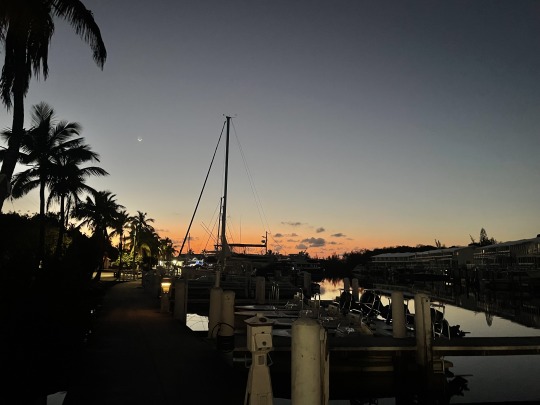
Sunrise in the protected marina. Air conditioning was wonderful. Today we borrowed the marina bikes and rode to the south side of the island. Nancy had procured our Aliv phone card so we were back in business.
With the weather showing light winds for a few days. We top off the diesel tank on the way out of the harbor on the 10th.

Rounding the north end of the island we pass two cruise ships docked at “Coco Cay.” Poor people think they are seeing The Bahamas. But they never get to see the real Out Islands or the people.
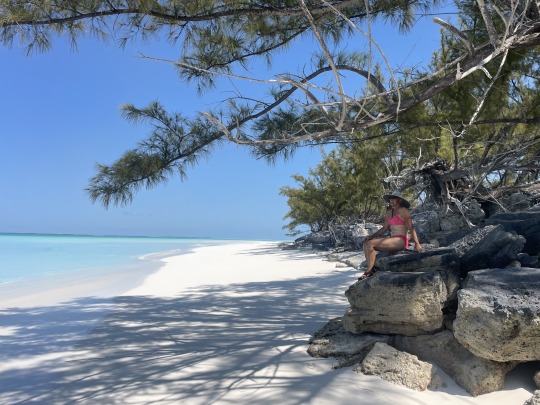
This is The Bahamas that were prefer. Not everyone is lucky enough to experience the absolutely beautiful and peaceful beaches. This is Ambergris Cay just south of Great Harbor. Flat calm water for our two days here which is rare and much appreciated. Makes getting the dinghy engine on and off the dinghy much easier. Following are some of the best photos of our cruise. If you tap on the photo it should enlarge on your screen. Then, either tap it a second time or the sliver of photo on either side to scroll through the photos without the commentary.
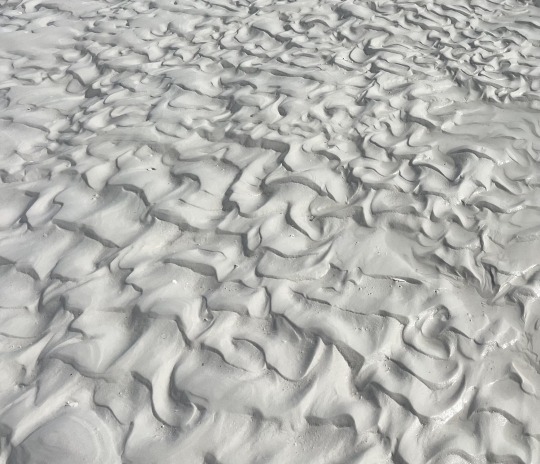
We plan our day to beach comb during the low tide, when the beach is exposed.

This is Money Cay one of our favorite islands. There is one place with large chucks of coal scattered along the beach for 50-100 yards. Obviously from a nearby wreck. It must be completely covered in sand because there is no wreck visible nearby.

Nancy on the right side of the photo. This sand flat is exposed for miles. Tides now are larger with a nearly New moon.

In 6 hours there will be 3 ft. of water here. Until then we will explore.

We found this unique pool feature and will come back later for more photos.

No human footprints to be seen, just prints from a Heron.

Contemplating Driftwood.

Part of the wreck that washed ashore. Several old broken bottles are strewn around the beach.

As the tide began coming in we headed back to the boat for diner and cocktails when the sun sets over Ambergris Cay.

Day two at Money Cay, back for more photos.

Hundreds of small mollusks walking around the exposed sand flat make for an interesting site.

Dana in the tidal pool.


Walking back to the dinghy.
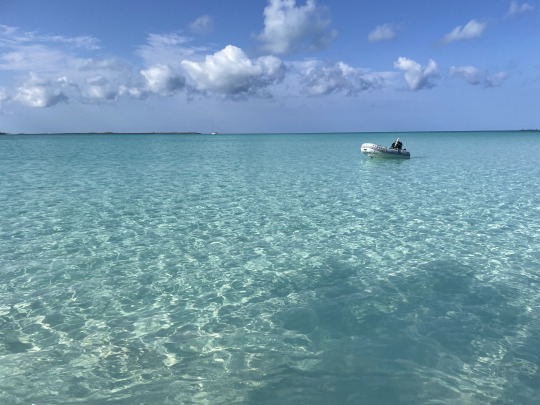
Our dinghy anchored out. We use two anchors so we don’t get stranded. Today I had towed Nancy to shore on her padddleboard.
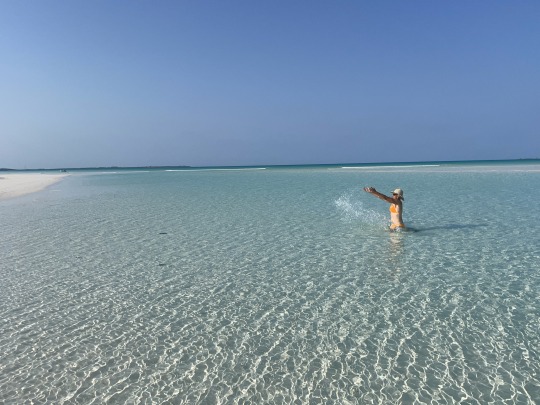
Nancy enjoying herself.

Back at the boat we have secured the dinghy for our 60 nautical mile run to Eleuthera. With our limited time this year we need to move south whenever the weather permits. Now it is time to enjoy the sunset over Ambergris Cay till next year.
3 notes
·
View notes
Text
Wales day 6 and 7, August 2024.

Today we trek to a Castle in Caernarfon on the Wales mainland. Neil and Beverley have seen this multiple times so they did some shopping in town while Nancy and I did a 1 hour self guided tour.



Neat little town, this was a four day weekend and it was busy.

You can’t go to Caernarfon without going to the “Black Boy Inn.” As the sign says, built in 1522. Making it one of the oldest pubs in Wales. To pit in perspective, 254 years before America was founded.

This is the front door.

Neil and Nancy bellying up to the bar while putting in our order of Guinness.

Round two….

Wales is known for their love of poetry. They have a yearly competition where the winner is presented with a one of a kind hand built chair. Here I am sitting in one from a bygone era.

From the “Black Boy Inn” we headed to a great Indian food dinner. I thought it a bit strange that a sign in the entry said “no personal sodas allowed.” Turns out being muslim they did not sell alcohol. So you were allowed to bring in your own beer, just not sodas.

Day 7 morning walk. One of many wild flowers, vines and blackberries along the walk.

Neil’s twin sister Janet and her son’s dog joined us for the walk this morning. The day prior we ran into one of Neil’s neighbors near Saint Ceidio’s Church. She mentioned she had the key to the church and helped keep an eye on it. When stopped at her house and retrieved the key that day. She was kind enough to invite us in. She and her husband had taken an old water mill that was in ruins and rebuilt a beautiful house out of it. So today we will get inside of the church.

This church is a 19th century church built on a site that may have been used as a church as long ago as 630 ad. This church was rebuilt using the stones from a 14 th century church previously sitting here.

West wall with its bellcote.

Neil with the key to the door. The round headed doorway may be from the 14th century.

This church has not been in use for many years. So we had to knock down several spiderwebs. Neil made himself at home in the pulpit. Which he had also done in the church in New Bedford, Mass. Which was featured in the movie Moby Dick.

In the back of the church was a stretcher used to carry caskets to the graveyard.

An inscription on slate in the memory of a 21 year old who died in 1802.

Dropped the key off at the old mill which is now a house.

Janet, Charlie and Nancy checking a pasture on the way home. Hurry up we don’t want to miss tea time!

After lunch we drove to the north shore of Anglesey to look at this lighthouse on the point to the right.

Point Lynas lighthouse is very unique. Since it is plenty high to see from the sea. It is built into the wall of the building with light only visible for 180 degrees.

The walk to the lighthouse.

The gate leading to the lighthouse. There are a couple of rooms that you can rent here. Not sure how nice those expensive rooms would be when the fog horn sounds.

Here is the actual light. There is a modern radar antenna, and anemometer on the roof. The ship pilots used this point to help ships getting to Liverpool. The pilot station was built in 1776. This light was built in 1835 which is visible for 18 nautical miles.

A heather covered hillside leading to the water. One seal was visible nearby.

Windy out here on the point.

View from the point back towards the lighthouse.

Neil in the heather.

Neil working the lath in his shop, which he let Nancy try her hand at. One more night watching “Rawhide” then we leave on the ferry the next day for Dublin. What a great vacation, thanks to Neil and Beverley Gadsby.
3 notes
·
View notes
Text
Photo safari to Tanzania Jan. 2024, part 1
Nancy and I had a once-in-a-lifetime opportunity to go on a photo safari. A friend of Nancy's mentioned she was leaving in 30 days for her 30th trip to Africa. Nancy said that would be cool and her friend said “come with us.” So we did.
Ruth and Bob had been with our guide Raffy recently and he was starting his own guide service. So here we are on a 10-day safari with a new business owner who is going to pull out all the stops for his first clients. Plus Ruth is almost as knowledgeable about the birds and animals of Africa herself.

Above is Ruth, Nancy, Dana and Bob at the gateway to the Serengeti about day 7 of our adventure.

Here is Raffy, Nancy and Ruth having breakfast in the middle of the Ndutu Conservation Area. This is typical of our days. We are always the first jeep out of camp as the sun is just lightening the sky. After several hours of viewing lions, zebras, wildebeest, and gazelle. Raffy parks us in the open and we break out the breakfast provided by the camp.

Did we get to see animals up close?
You bet we saw them all, here is a tonsil check on a male lion of the Upper and Lower Marsh Pride. Hopefully, I have your attention and will start over at the beginning of the journey.
Nancy and I flew Miami-Philly-Doha, Qatar on American Airlines. Doha is about the cleanest prettiest airport in the world. Since we had a 7 hour break there and needed to get on Tanzania time. We opted for a private cubicle to sleep in. Pay by the hour, nice bunks and just what we needed. Leaving Doha at 0115 in the morning we flew 5 hours to Killamanjaro Airport (JRO) in Tanzania.

Changing of the Guard. Turns out that the Captain flying us from Miami to Philadelphia is none other than a former First Officer of mine in Miami, Brandon Lozano. On our flight was his soon-to-be in-laws, Dawn and Mike. We have to get back quickly from this journey since we are invited to Brandon and Jackie’s wedding in Key Largo. Super smooth flight, Capt. thanks for the ride!


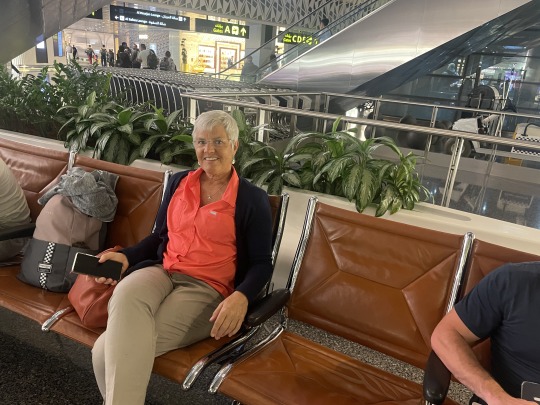


Doha airport and Nancy in our “Sleep N’ Fly” bunk room.

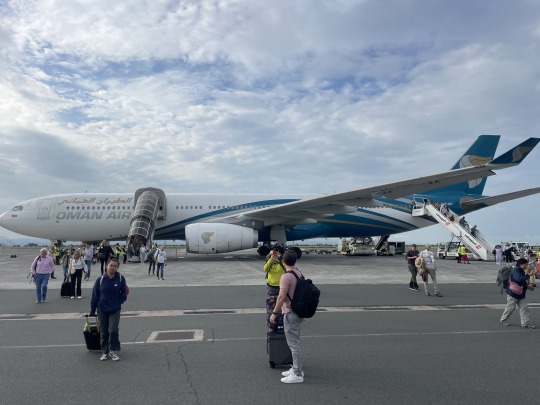
Kilimanjaro Airport and Qatar aircraft we arrived on. My visa had been approved prior to the trip but Nancy’s had not. Turned out not to be a big deal, and they allowed her in the country. Everyone we met in Tanzania could not have been nicer, starting with the Customs and Immigration officials. This country knows their future lies with tourism. Every person we met including all the camp staff, asked us to tell our friends about Tanzania and to come back soon.
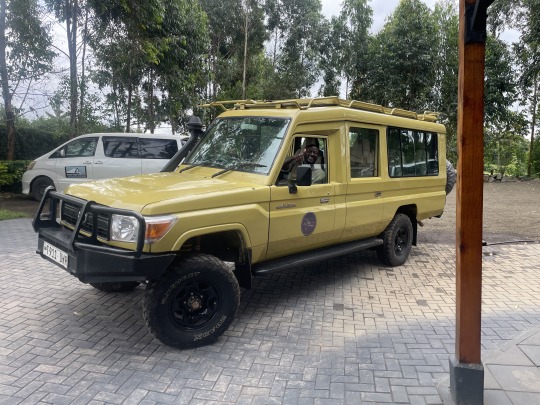

This is “Simba” a 10-year-old 300,000-mile 4-wheel drive Toyota Jeep Land Cruiser. Raffy and John met us at the airport and drove us to our first lodge, Shamba. We were the only guests at the five-cabin lodge. Outstanding staff and great food. “Simba” is Swahili for Elephant.
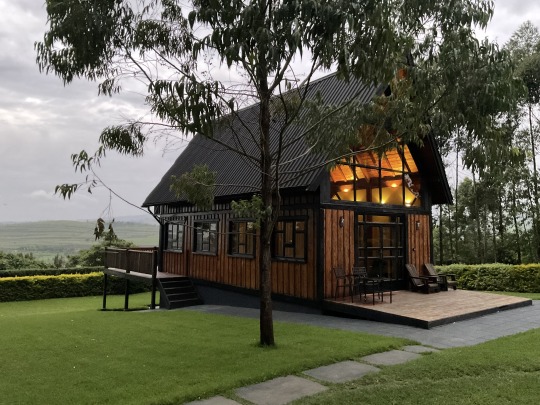
This cabin has a loft with a huge bed upstairs, bath and kitchen downstairs.
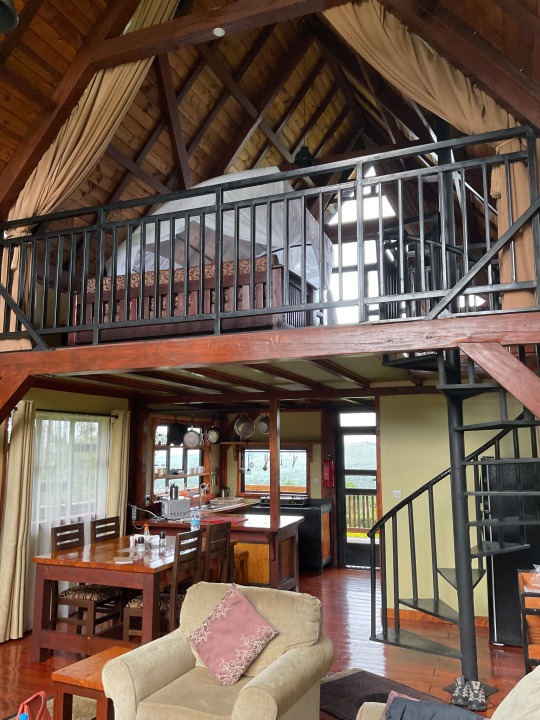
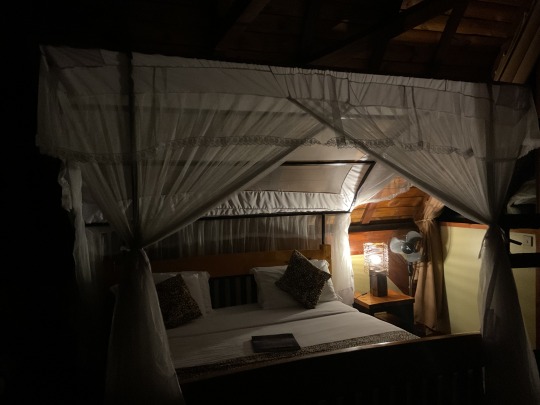
Mosquito nets surrounding the beds is standard in Africa. Even though there very heavy rains the weeks before we arrived, we only had one or two mosquito bites.

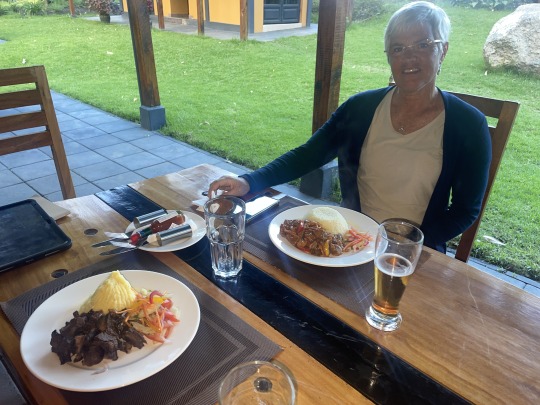
Sitting by the “Camp TV” in the evenings as it chilled down. Nancy at dinner.

While we waited for Ruth and Bob to arrive in Arusha, Tanzania. We spent one day with Raffy in Arusha National Park. This was going to be our appetizer for the parks. A small park but it did have a monkey we would not see in any other park. So we got to see our first giraffe, elephant, zebras and baboons.
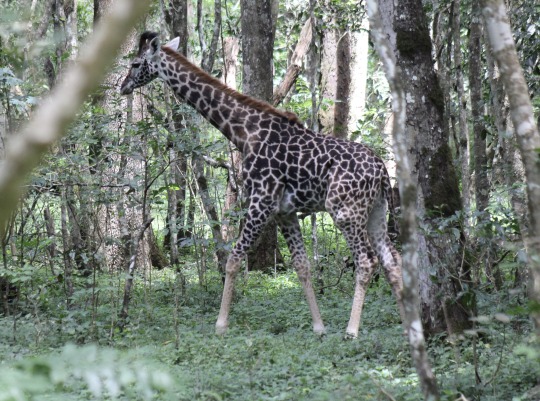
Once into the park, Raffy took a side road through the heavy woods. It was a road less traveled. Which is Raffy’s style. We ran across several giraffes which made the entire safari worthwhile in Nancy’s eyes. Things would only get better. The only giraffe in Tanzania is the Masai Giraffe.
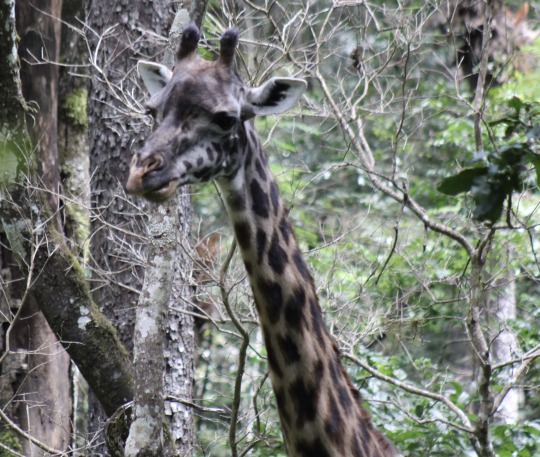
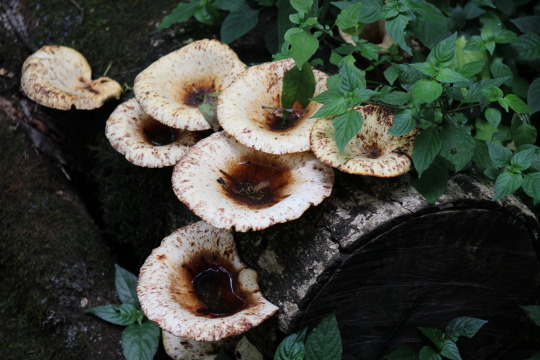

Above is a very elusive “Harvey’s Red Duiker”, which is a very small deer. We saw a couple and were lucky to get this photo. I think they get the prize for the homeliest-looking deer.

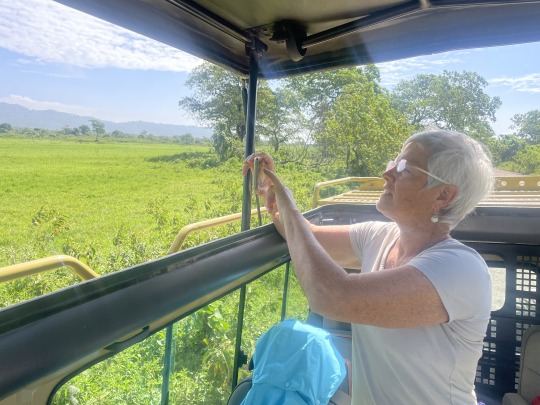
This is the seventh-highest mountain in Africa, Mt. Meru at 14,980 ft. It is inside the park. Many hikers spend three days hiking up to the summit. Each group of hikers is required to have 2 armed Rangers to protect them from predators.
Above Nancy is standing up in the jeep and taking photos. Tremendous viewing with the top raised.
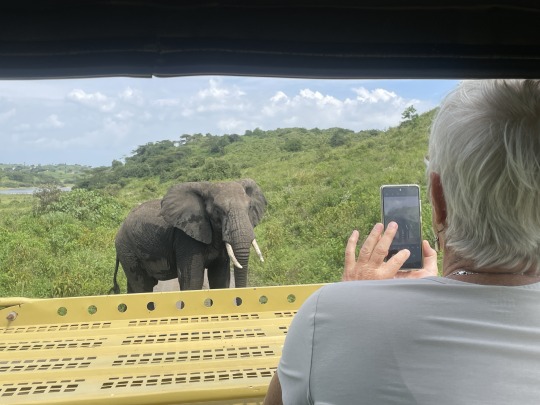
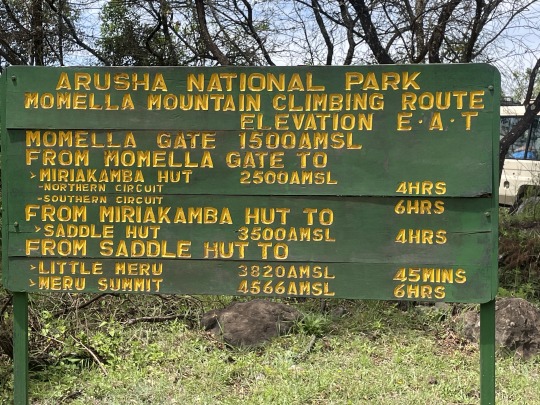
Nancy face to face with her first of many elephants. This is an older male. He was a half mile behind a female with a juvenile. Elephants have 7 sets of teeth. They wear each of the sets out in about 10 years. This guy was probably on his last set. He was not in great shape. You may have heard about elephant graveyards. Where there are multiple elephant skeletons. These graveyards are in the easiest food-gathering places for elephants that have lost their teeth. Once they lose their teeth they basically starve to death.
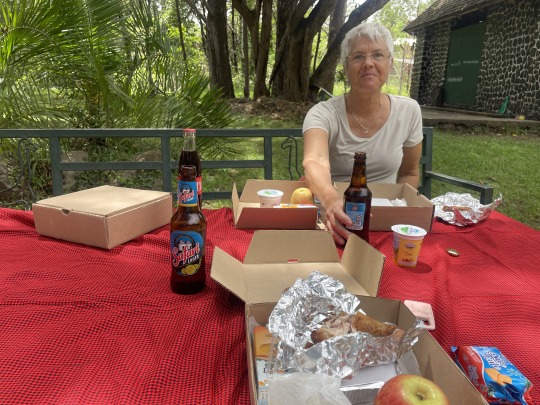
This is our lunch break at a park site, that provides picnic tables and restrooms. Armed park rangers are nearby and ready to escort hikers to the top of the Mt. Meru.
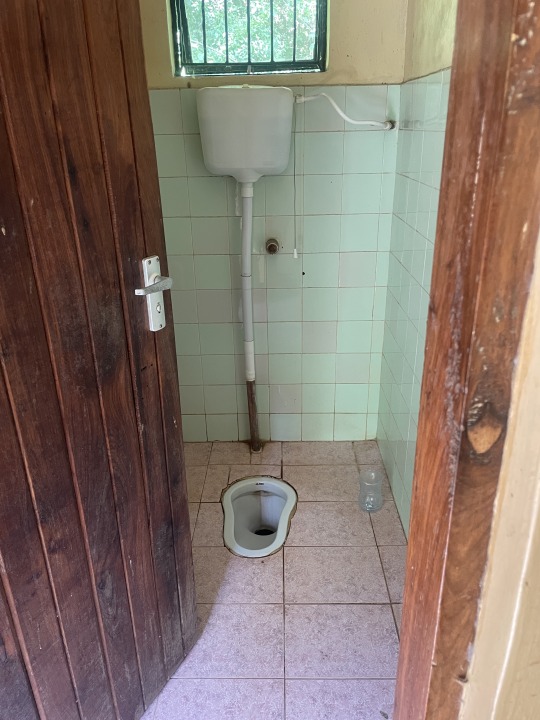
This is life in a third-world country. Using gravity, not much to break; just saying….
Out of permitted photos. check out part 2. above.
If you are interested in your own African Safari, check out Raffy’s website: https://maweafricanventure.com
4 notes
·
View notes
Text
1 week on Kauai, car top camping.

This is the camping rig we rented from “Hawaiian Overlander” on Kauai. It is a fully decked lifted 4WD Black FJ Cruiser. The whole thing was painted in “Rhino liner.” So it was damn near bullet proof.

We flew in to Lihu’e Airport from Honolulu on Hawaiian Airline. The previous week they had flooding rains in Kaua’i. We were picked up and given the keys to the vehicle in a small park. We started driving up into the center of the island towards the first of a dozen suggested camping spots. You just pull into deserted end of the road spots and pop the tent up. Above is one of Wyland’s original Whale paintings. We ended up running into one of his art studios on the north end of the island.

This is ‘Opaeka’a falls as seen from the parking lot. Basically the closest we could get. Here the water drops 151 feet. This was just minutes from picking up the jeep.


Kauai is known for being over run with chickens. To the point that they make a plastic dancing chicken with a hula skirt. There was one on the dash of the jeep.

The first night we camped on the dead end road above Larsen’s Beach. This homemade sign was nailed to the tree along the trail. It reads:
“NO SAFE SWIMMING, DEADLY UNSEEN CURRENTS HAVE KILLED.” Beside it are 14 hash marks. That gets your attention. It was late when we put up the tent. One abandoned car that had lots of personal things in it was nearby. We were questioning ourselves how safe this was. Turned out to be a quite and peaceful night. So much so we camped here the next night as well.




We did an early morning walk on Larsen’s beach. Surf was not bad in close.

We ran across this sign and a yellow line denoted the Monk seal resting area. Very obvious not to cross the roped off area. Looking around we could see a grey/brown shape almost up to the tree line.

While watching this seal laying there, we could make out a small black pup at the seals tail. This is an endangered species with approximately 1,400 seals alive. Pups are nursed for 6 weeks on the beach and then abandoned. Very fortunate to see a Hawaiian seal at all, much less a pup.

As Nancy and I beach-combed the other direction. I almost stumbled over a single seal in the middle of the beach. This seal was not in a roped off area and I had my eyes looking straight down for shells. The seal never moved before or after my encounter. So now we have seen 3 seals pretty cool. Later I reported the sightings to NOAA.


Beaches here are a light brown, with few shells.




Constant trade winds shape the trees at the coast. Bottom left is the Kilauea light house built in 1913. At the time there was not a road to it. Everything was brought by boat and lifted up.


These are lei’s on sale at the local deli, selling from $10-$42.




This is the Christ Memorial Episcopal Church built in 1862. The headstones were very interesting and had lie’s draped across them.

On the north end of the island there were a half dozen one lane bridges. In this photo you can see how the traffic works. One side stops and about 6 cars cross then the 7th car stops and allows the other side to go. It was still drizzling when we traveled the north shore.




Drizzling on the north shore and visiting a cemetery on the shore line.
1 note
·
View note
Text
Munich, Germany. Nov. 11-13, 2024

We arrived at the Munchen train station after a 2 hour train trip from Passau. It was a 1 mile hike to our hotel in downtown Munich. We passed by the famous Neus Rathaus (New Townhall) built in 1874. We passed by as the Rathaus-Glockenspeil did its thing on the fifth floor in the 278 ft. tower. The apparatus only does its mechanical merry-go-round and bell chiming 3 times a day. Hundreds of people were shoulder to shoulder watching the show as we walked through the crowd towards our hotel.

Nancy picked a great hotel in a perfect location just off of the main plaza. The Platzl Hotel let us check in early so we could go walk about.

Right around the corner from our hotel was Hofbrauhaus. You haven’t been to Munich, if you haven’t been to the famous Hofbrauhaus (court brewery) in Munich. Established in 1828 by King Ludwig I of Bavaria. Regulars have been Mozart and Lenin. 1920 saw the first meeting of Adolf Hitler and the National Socialist Party here.

Very open and ornate, with communal tables.

Mugs are 1 liter in size.
“Honestly officer, I only had two drinks tonight.”

The different beer houses host their “regulars” who have their own table and personal mugs. The Hofbrauhaus has 3,500 “regulars.” Not uncommon to see them wearing the traditional Lederhosen. This type of gathering is called a, “ Stammtisch” and a sign (see photo above) on their table signifies it is their tabel. (Photo from facebook).

Part of being a “regular” is having your personal mug locked up in your safe. There are 616 such stein safes in the Hofbrauhaus. Some of the steins are over a hundred years old.





As we wandered around the plazas we partook of warm red wine called, “Gluhwein.” Which translates into “Glow-wine”, referring to how you feel after drinking multiple small cups on a brisk December day. When you return your mug you get several euros back.
This is the May pole in the plaza.

Eating our way through the street venders.


Met an Aussie eating a pickle, he highly recommended it.

Pickles, pickles, and more pickles. Big pickles, small pickles, sour and sweet pickles. I think there is a Dr. Seuss pickle book in here!

The mushroom shop next door displaying their stuff.

Sights around town.

The Theatine church of St. Cajetan built from 1663 to 1690 situated on the Odeonsplatz.

This is the Feldherrnhalle monument to the Bavarian Army commissioned in 1848 by King Ludwig I of Bavaria. It was made famous during WW 2, by Adolf Hitler. In 1923 Adolf had started a revolt here and 15 of his group were killed. Adolf was arrested and sentenced to prison after that. When the Nazis took over in 1933, Adolf turned this into a memorial site. SS soldiers were on memorial guard duty here 24 hours a day. Any passerby was expected to give the one arm “Heil Hitler” salute. Many secretly abhorred saluting.


These are the bronze cobblestones on the “Shirker’s Lane.”


We visited this very small but beautiful church. Called St. Johann Nepomuk, better known as the Asam Church. It was built from 1733-1746 by two brothers as their private church. One was a sculptor the other was a painter.

It was darker than most churches we visited but was probably much more ornate. Definitely the smallest.

This was a great treat of mixed hot nuts, served in a paper cone.

Dinner was a spit roasted pork knuckle. I went home stuffed.

Breakfast was these light donut things and good coffee.

This group of regulars were playing music next to us in the back of the breakfast restaurant.

This was a cheese display as well as a huge cheese knife for cutting large cheese wheels. The far end of the knife is fixed with a bolt making a hinge. It is pulled down onto the table, which had many knife cuts in it. Right now the knife is propped up with a piece of wood.
Nancy took in a little spa time the last night in Munich at the hotel. Early wake up with a bag drag to the nearest underground subway. Then a 20 minute train to the Munich airport. One stop before the one way train to the airport, we got caught by the police for not “validating” our tickets. There is a small blue box that stamps a hole in your ticket, who knew?
We promised to leave the country. The police were happy with that.
So ends our Danube cruise, starting with several days in Zurich and ending with two days in Munich. Great trip, great memories!
1 note
·
View note
Text
Danube River Cruise. Part 8
Linz, Austria.

The ship traveled all night and passed through one lock. We wake up moored at Linz, Austria. Some of the 94 passengers will take a bus tour to Salzburg, Austria. It will be all about the “Sound of Music” and they will be gone 10 hours.

For the morning excursion multiple buses for each of the half dozen cruise ships show up. We all get corralled by color for the proper guide. Nancy and I elect to take a 2 hour walking tour around the historic downtown. We just walk from the ship 5 minutes to the plaza center.

This was a Saturday and a flea market was in the square near our ship. Here is the local Plague monument like so many other towns.
Linz was first a Roman Garrison town reborn as a trading and mercantile center in the Middle ages.

This is the doorway to the tourism office, notice the relief above the balcony. Here they have a large room with a goggle earth photo on the floor that gives a great point of view. Our guide walked all through the city pointing out interesting points.
Note the balcony above the doorway, now check out the following internet photo below. This is very interesting and important as a place Adolf Hitler gave a speech in his home town.

Very chilling to stand in front of this door and think what had transpired in this plaza.

From the main plaza we wonder through the back roads of the town.

Our guide points out one of the 20 Jewish Holocaust memorials in town. These are placed all around town where jews had lived prior to being forced out and possibly killed. There is a working doorbell with the name of the folks who lived there along with the dates of their birth and death. The site in the background was the Jewish Synagogue that was destroyed. This is so timely with the antisemitism that is going on in the world today.

One of the small courtyards off the side of the street. One of the other courtyards we walked through was where Mozart stayed and composed Linzer Symphonie in 1783.

This is the New Cathedral or Cathedral of Immaculate Conception. Plans started in 1855, this Cathedral will hold 20,000 people.

This cathedral still has many of the original stained glass windows. But several were blown out during WW 2. Usually when that happens they are replaced with plain white windows. Here they replaced them with modern stain glass motifs.

There are 7 bells in this cathedral with the largest weighing 8 tons. It is so large it had to be brought down one floor when it was first rung. Because it caused the spire to sway when it was swinging back and forth.
After the guide finished taking us through the cathedral, the tour broke up. Nancy and I found our way back to the ship for lunch.

Nancy has been to the infamous Dachau concentration camp before and passed on this tour. So I went on the two and a half tour of the Mauthausen Memorial myself. This labor camp was 12 miles out side of Linz. Unlike Dachau and other concentration camps that were built to strictly kill as many Jews as it could, this was a labor camp. This was the hub of 49 Nazi labor camps, that provided workers for munitions and arms plants.

Over 92,000 people died here. Most were Polish jews, some were Nazi objectors, but even some English and American airman were imprisoned here. The average life span was 4 months before the prisoners died of malnutrition.

Only a few wooden barracks were still standing.

This was the last concentration camp liberated in WW 2. When the Americans rolled in, 22,000 prisoners were here. The allied soldiers ended up burying around 2,000 prisoners in a mass grave. The prisoners were so weak at that point, they still died even though the camp was liberated. Large memorials are found outside the walls by a dozen countries that had their people killed here. Not what I had expected.
It was a somber bus ride back to the ship.

I would like to say this was the coffee bar in our room. It was actually in the guest lounge in the stern of the ship.

Here Nancy is checking her phone with a cup of coffee in the lounge.

The staff were constantly cleaning the cabins and frequently seen wiping down the walls of the companionway.

This is the center entry way in the ship, looking down from the upper deck of guest cabins. Nancy and Catherine are on their way to morning yoga.

Claudia is running the morning yoga class. Nancy in the foreground.

Meanwhile I visited the gym daily. Notice I didn’t say, “worked out in the gym daily.” Just visited.

Here we are locking through with another ship. This was the first lock we went through during the day, so several of the passengers turned out for the show. The top of the two ships are level with each other. As are the cabin windows. Our Captain warned us at the beginning of the cruise we will be side by side with other ships at time. Beware leaving your curtains open. Apparently the Captain of the other boat did not give the same briefing to his guest. As we pulled along side, everyone in our main lounge viewed a naked women coming out of her bathroom and then diving back in.

A foggy day for sure.

Another interesting church on the bank of the Danube.

Approaching the mouth of another lock. Seems to be some religious statue on the exposed rock.

The lock wall is on the right as we lock through with a second ship. As you can see we only have a couple of inches to spare.

The Captain has dropped the ships bridge down halfway. The ship next to us clears everyone off of the top deck and drop their bridge all the way down. We are still rising up in the lock and will barely pass under the lock bridge ahead.

Here the ship next to us is about to exit the lock. You can see they only a little over a foot of clearance.

Our crew has dropped the awnings covering the top deck tables and chairs.

We successfully pass under the bridge at the lock. We are off to Passau, Austria.
Passau is our all time favorite town on the Danube!
1 note
·
View note
Text
Danube River cruise, Part 6. Nov. 7, 2024
Vienna, Austria.
The Danube is the second longest river in Europe at 1,777 miles. Flowing from Germanys Black Forest to its delta on the Romanian and Ukrainian shores of the Black Sea.
Spring time snowmelt in the Alps causes floods of biblical portions.

We wake up to a very foggy morning docked in Vienna. We are moored as the third ship out. When we leave for our tour today we actually walk through two other ships to get to shore. One was the sister ship to our boat, the other was a more prestigious TAUCK cruise lines ship.
Vienna obviously has a tremendous amount of history and culture, but it is also a very modern and large city. So it was not that easy to just meander around old small streets, directly from the ship. So although impressive it just wasn’t a favorite stop of ours.

Tour buses pick up each of our groups. I am assuming almost all 94 passengers took the morning tour into town. Plus there are half a dozen other ships here needing buses.


This is the Parliament building.

Gate entrance with a Hercules sculpture.

More gates with Hercules saving the city.

This is a baroque monument to the ending of the Great Plague Epidemic of 1679. The “Plague Column” or “Trinity Column” has Emperor Leopold in the center praying to the gods above to end the plague. The sculpture of Leopold shows his genetically deformed lower jaw. Which was due to inbreeding of the Kings and Queens of the time. It was better to intermarry between the leaders of countries than to fight wars.

This is St. Stephan’s Cathedral completed in 1578. It is oriented to the sunrise of December 26 the birthday of St. Stephen. The tallest spire stands 447 ft. high. When the Germans retreated during WW2, orders were given to shell it 100 times and reduce it to rumble. Luckily the local Captain, Klinkicht, disregarded his orders.

The massive front door is called the “Giants door”, possibly due to a Mammoth’s thigh bone that was hung over the door originally. The bone was found when initial excavations started in 1443.

The insides of these Cathedrals are just spell binding, and photos do not do them justice.


The Cathedral has 22 bells and over 12,000 organ pipes.

As we walked around town, we came across Mozart’s house. Sigmund Freud did his studies in Vienna.

I took the afternoon off, while Nancy went to the 1,400 room Schonbrunn palace by bus. The Captain gave me a tour of the wheel house. All of his computer displays for navigation are below the counter height because the top half of the wheel house can be dropped down to just above the counter. There is even a hatch above his head that can be opened up for him to drive the ship, with his head and shoulders above the roof.
Note the carpenters level on the front of the counter. He can balance out the boat moving fuel and water around. Attention to detail! Wouldn't want the doors below swinging open.

Nancy at, Schonbrunn, the summer palace of the Hapsburg Empire. This was built to keep up with the Joneses. It was to rival Paris’s Versailles.




Happy hour was an hour earlier today so we could attend the opera.

We attended a show of classical music and opera at the Vienna Opera House. The “Blue Danube Waltz” was written by Johann Strauss, the younger, at the age of 42. He was Viennas most popular composer playing the Blue Danube Waltz for the first time in February 1867. It is the unofficial anthem of Vienna.
This concert was just a sliver of music, opera and dancing all done with humor and gaiety. Our fellow passenger, Christina, who works for the London Philharmonic and attends many concerts was not impressed. But, when in Vienna you have to go to a concert!


The operetta singer.
When we wake up in the morning we will be docking at Durnstein, Austria.
1 note
·
View note
Text
Danube River Cruise, Part 5. First day traveling by ship, Bratislava.

This is the Parliament building in Budapest all lit up as we start traveling all night.

Looking astern the city of Buda under a crescent moon.

Crossing under the “Chain Bridge” crossing from Pest to Buda.

Looking out the back of the ship from its small inside lounge.

We had cruised all night around 11 kts heading upstream. We are now in Slovakia, with the Slovakian courtesy flag flying from the right side of the radar mast. We will stop early enough in the day to do a tour of the next city before lunch.

First stop is Bratislava, the Capital of Slovakia. Bratislava is the fourth largest town on the Danube with a population of 500,000. We dock next to the old downtown where we walk with our “Adventure Host”, Claudia, to the Bratislava castle overlooking the town. Each day you can sign up for a tour by a local guide or go with a crew member, called an “Adventure Host.” The Adventure Host shows you the way to get someplace, but does not give any commentary such as the history. Claudia did all the Adventure Host tours either climbing to a castle or biking 21 kilometers. Claudia also leads the yoga class every morning.

This castle was pretty much a bust. Truthfully, it was only advertised as a great view of the city. But we later toured the old town which was very unique and fun to walk the streets.

This is Saint Martins cathedral, where 11 Hungarian Kings and 8 Queens were crowned. This city has been on the map for centuries prior to the Romans taking it.

Nancy found this sculpture of a man at work (see top of photo) and rubbed his hard hat.

Typical carriage entrance leading to a courtyard. The entrances where horse carriages drove through always have large “Guard stones” protrusions at the base. Protecting the walls from the carriage axle hitting it and damaging both the carriage and wall. In some countries they are now even protected by law.

One of several churches we visited. This one was unique because the figures were not adorned in gold. They looked like silver. Note all the figures in the churches look like they are made out of solid gold. They are actually hollow wooden forms with gold leaf applied. As ornate as a large cathedral is they may only use 3 pounds of gold.

This was the pulpit in the same church. Just so ornate! Most are dark wood, so this caught our eye.
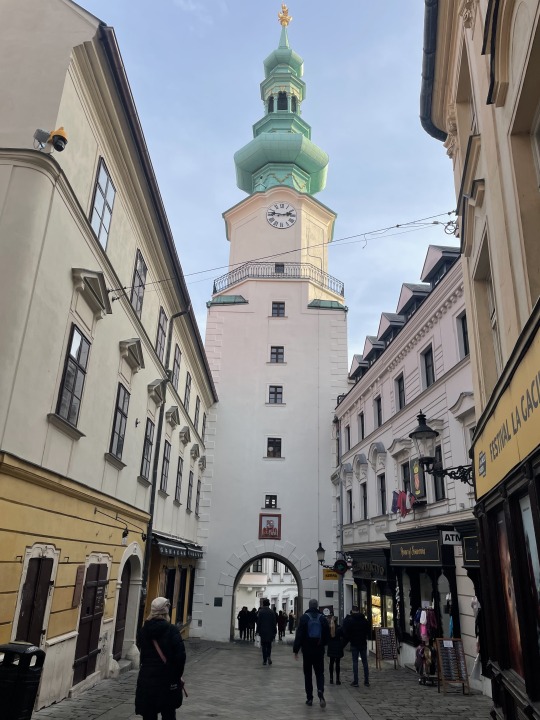
This was a city gate back in the day.

Hard to see in the photo but at the top corners above the doorway are the sheeves where the ropes ran through to raise and lower the draw bridge across the moat. Once we figured this out we were able to identify them at other castle entrances. The moat has now been filled in. Just imagine Kings and Knights riding their horses into the city through this same gate.

Back to the ship for lunch and drinks before exploring the old city again. At each stop the lunch or dinner on the ship represents the local culture. This is Slovakian Goulash on rice with pasta, Nancy has a light soup with wine. I think we walked every single winding road and ally in the old city. Only one church was locked, but we toured 3 or 4 others.

This is a monument to the Plague built in 1713. Monuments to the Plague were very common in the towns we visited.


There are a few “fixer-uppers” available in town. On the left is the most ornate “guard stone” we saw on the trip.

The city plazas were busy with Christmas market stalls being built. Several different embassies to Slovakia were in the buildings around the plaza.

Another curving ally covered in large cobblestone. Note the guard stone fender on the left side of the ally.

This is the city gate the King rode through on his way to the coronation.

The doors were just beautiful, you don’t see anything like this built today.
1 note
·
View note
Text
Danube River Cruise, Part 3. Budapest for 2 days prior to the ship.

We survived the train ride to Budapest. The ride from Wein had a homeless woman latch on to us. She tried to ride the first class car with us, even though she did not have a ticket. They threw her off the car at the next station. Nancy and I had a 6 seat compartment to our selves. At least these seats reclined enough we could sleep for a few hours. Above is Nancy at the Keleti train station in Budapest. We thought the hotel was a 5 minute walk away. Except there are two train stations in Budapest, this was not the close one. Today’s technology gave us a map with walking times on Nancy’s phone. So for 23 Euros we put our lives in the hands of a maniac taxi driver. We at least learned look way, way down the road before crossing as a pedestrian. I believe he may have been a retired Formula One driver.

Took this photo to recognize our street corner on the way back. Downtown Pest is very ornate and rather beautiful. Did you catch the fact that this is “Pest” and not “Budapest.” Turns out “Buda” is the other side of the Danube. They are referred to as one word “Budapest”, but they actually started out as two different cities. It is pronounced, “Buda-Pesh.”

Our hotel is a 5 minute walk to St. Stephen’s Cathedral. Here we hoped on the “Hop-on-hop-off” bus. A great way of riding around the city for an hour and getting acquainted with what is where. We bought the 24 hour pass.

Kunsthalle Hall of Art across from Hero’s Square.

Just a small part of Hero's Square. You just cant get it all in the picture.

This is a beautiful eclectic Castle/Church/Museum called, Vadjahunyad behind Hero’s Square. They purposefully incorporated several different castles from Europe into this one structure. It actually worked out very well.

Here we are crossing a symbolic mote and approaching the main gate. Cypress tree on the right is turning colors with a vendor in front of it selling Hungarian red wine and pretzels. A small charcoal fire was under the pot of red wine.

Jaki Chapel inside the Castle grounds.

Statue of “Anonymvs.” The statue of the hooded figure opposite Vajdahunyad Castle is that of Anonymous, the unknown chronicler at the court of King Béla III (r 1172–96) who wrote a history of the early Magyars. Note the pen with the shiny tip in his hand; writers (both real and aspirant) stroke it for inspiration.


Monument to George Washington. Very strong relations between the two countries for decades.

Desert and Hungarian Coffee at the famous New York Cave Budapest. Voted the most beautiful cafe in the world. Very rich coffee with honey, cream on top and a few raisins sprinkled on top of the cream.

This is inside the cafe. It could be a palace. Always a line outside.

The New York Cafe.

We took the hop-on bus over to Buda on the west bank and explored the Turkish Bath house.

Statue at the far end of the Gellert bath. You can buy slippers and are required to use a bathing cap.

More of the Gellert Bath hall. About 8 different bath houses. One had a two story bath with it opening to the sky on a street corner.


On top of the Citadel with the horse ring in the building behind the statue.

Beautiful statues outside the museum on top of the Citadel.

Entrance to the courtyard of the Museum.

View looking North East across the Danube with the “Chain Bridge” in the foreground and Parliament left of center.

The funicular car climbing the hill. We were crossing a bridge above it halfway to the top.

We took the hop on bus early the next morning while we could get to places we couldn’t easily walk. We jumped off in Buda and explored this 18th century baroque church.

This is the opera house lobby.

This is the front of the opera house where the less worthy people entered. The elite used the side door.

This is Nancy in the underground train station for the Opera house.
1 note
·
View note
Text
The Bahamas 2024, heading home Part 7.

Time to start working our way home. About 345 nautical miles, little to no sight seeing along the way. We refuel at Salt Pond, Long Island. Then spend one more night at a remote anchorage in Grey’s Bight Long Island, near the blue hole.

I collect 5 sheepwool sponges, and clean them everyday. The first couple of days are the worst. They stink and the flies are thick. So we leave them in the dinghy. Tailwinds are a problem heading downwind. Each day I change the water and squeeze them multiple times to clean out the organic material.

Heading up Comer Channel seas are flat. But the wind is forecast to pick up. We anchor behind a very small island on the back side of Great Exuma. Winds will be blowing from the East for the next couple days. But we can hide from the worst of the waves behind the Exumas and not burn fuel motoring.
We run 100 miles up the Exumas and then top off at Staniel Cay Yacht Club.
Buy the time we leave Normans Cay for our run to West Bay New Providence winds have died down making an easy crossing.

One night in West Bay. Weather window is holding for our crossing of Tongue Of The Ocean (TOTO) the next day.

Three dolphin send us on our way early in the morning.

Near “the pocket” of TOTO, fish are abundant. We cross paths with three Short Fin Pilot Whales, in the photo above. More than likely they are young males. As you can see seas are flat for a nice crossing. We will anchor on “the Bank” in 20 feet of water after a 75 mile day. We will hide from boat traffic on the back side of Mackie Shoal.

Above is the wreck of the Hesperus on “the Bank”, east of Bimini.

This is North rock just off Bimini, looks like a submarine with a periscope.

This is Radio Beach Bimini. Normally a great place to anchor out of the swells. With easy departure before daylight to cross the Gulf Stream. With the recent addition of cruise ships bringing tourist. A jet skies concession has opened up. So they were flying around. But at sunset things settled down.

Sunrise in the Gulf Stream with freighters passing behind us. Several hours out we hear a May Day call from a private vessel with a fire in the engine room. US Coast Guard could not hear them, so I answered them. They had lost all power. USCG could hear us, so we relayed information between the two. Fire was out, but they were adrift and required a tow.

We had a great crossing with calm seas and entered Biscayne Bay at Stiltsville. About a dozen weekend party homes still left. Turn down Biscayne Bay and check in with US Customs via their app. All goes well and we are cleared in to the country with out having to go to their office.

Once I get the above message it is a huge relief for me. People sometimes have to jump through some major hoops. Or even pay huge fines if they mistakenly bring in a food item. We end up anchoring for the night in the bay near Ocean Reef. Several dolphins cruise by at day break. We cross to the ocean but can only make 2 knots without overheating the engine. After anchoring behind Tavernier Key, Nancy finds a huge ball of seaweeed wrapped around the prop.

After we got home and prepared the boat for Hurricane season, I disassembled the heat exchanger on the engine. This is part of the reason the engine was overheating. It needs to be serviced every 1,000 hours.

This is the hose leading into the heat exchanger. The black oblong thing in the center is the only area the water could come through the rest is calcification. Had to throw out this hose and give the heat exchanger an acid bath. Ready for next years Bahamas cruise.
1 note
·
View note